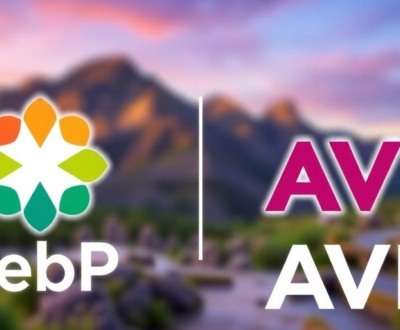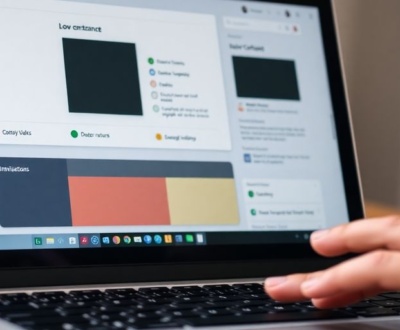How to Design T-Shirts: A Graphic Designer’s Guide to T-Shirt Creation
- October 29, 2024
- Blog
Designing T-shirts can be a fun and creative process that allows you to express your ideas and style. Whether you’re making shirts for a special event, promoting your brand, or just for personal use, understanding the basics of T-shirt design is essential. This guide will walk you through everything you need to know, from coming up with design ideas to choosing the right printing methods.
Key Takeaways
- Good T-shirt design helps express your style and brand identity.
- Choosing the right fabric is crucial for comfort and durability.
- Using design software can simplify the creation process.
- Different printing methods can affect the look and feel of your T-shirt.
- Gathering feedback is important to improve your design before printing.
Understanding the Basics of T-Shirt Design
When it comes to T-shirt design, getting the basics right is key. T-shirts are more than just clothing; they’re a canvas for creativity and self-expression. Here’s what you need to know:
Importance of T-Shirt Design
- T-shirts can convey messages, promote brands, or simply showcase art.
- A well-designed T-shirt can attract attention and spark conversations.
- They serve as a form of personal expression for the wearer.
Types of T-Shirts
There are several types of T-shirts to consider:
- Crew Neck: Classic and versatile.
- V-Neck: Offers a stylish twist.
- Tank Top: Great for warmer weather.
| Type | Description | Best For |
|---|---|---|
| Crew Neck | Round neckline | Casual wear |
| V-Neck | V-shaped neckline | Dressier occasions |
| Tank Top | Sleeveless | Summer and workouts |
Choosing the Right Fabric
- Cotton: Soft and breathable, perfect for everyday wear.
- Polyester: Durable and moisture-wicking, great for sports.
- Blends: Combine the best of both worlds for comfort and durability.
Remember, the fabric you choose can affect the overall look and feel of your design.
Understanding these basics will set you on the right path to creating T-shirts that not only look good but also resonate with your audience. So, let’s dive deeper into the design process!
Creating a Design Concept
Brainstorming Ideas
When it comes to designing a T-shirt, this is where the fun begins! You get to explore different ideas and draw inspiration from various sources. Here are some great places to look for ideas:
- Company Logo: If the shirt represents a business, consider incorporating their logo. This helps with brand recognition.
- Events: Tailor your design to specific events, like family reunions or corporate gatherings. It makes your design more relevant.
- Quotes and Slogans: Use impactful quotes that resonate with the shirt’s purpose. They can convey messages or reflect values.
Selecting a Theme
Choosing a theme is crucial. It sets the tone for your design. Think about:
- Target Audience: Who will wear this shirt? Kids, adults, or a specific group?
- Purpose: Is it for fun, promotion, or a special event?
- Style: What vibe do you want? Casual, edgy, or professional?
Incorporating Brand Elements
If you’re designing for a brand, make sure to include their elements:
- Colors: Use the brand’s color palette to maintain consistency.
- Fonts: Stick to their font styles for a cohesive look.
- Imagery: Include any specific images or symbols that represent the brand.
Remember, a well-thought-out design can make all the difference! It’s not just about looking good; it’s about connecting with the audience.
By following these steps, you’ll be on your way to creating a T-shirt design that stands out and resonates with people. Don’t forget to keep it simple and fun!
Mastering Design Tools and Techniques
When it comes to designing T-shirts, knowing your tools is half the battle. Mastering design software can make your ideas come to life! Here’s how to get started:
Popular Design Software
- Adobe Illustrator: Great for vector graphics and detailed designs.
- CorelDRAW: Another solid choice for vector art, especially for beginners.
- GIMP: A free alternative that’s perfect for photo editing and basic design.
Using Templates Effectively
Templates can save you time and help you stay organized. Here’s how to use them:
- Choose a template that fits your vision: Look for styles that match your theme.
- Customize it: Don’t just stick to the template; add your unique touch!
- Check dimensions: Make sure your design fits the T-shirt size you’re working with.
Advanced Design Techniques
Once you’re comfortable with the basics, try these techniques:
- Layering: Combine different elements to create depth.
- Color Theory: Use complementary colors to make your design pop.
- Typography: Play with fonts to convey your message clearly.
Remember, the process behind crafting a custom T-shirt is all about experimenting and having fun! Don’t be afraid to try new things and see what works best for you.
Choosing the Right Printing Method
When it comes to getting your T-shirt designs out there, picking the right printing method is key. Each method has its own perks and quirks, so let’s break it down:
Screen Printing
- Pros: Great for bulk orders, reliable quality, and cost-effective for larger runs.
- Cons: Each color needs a separate screen, which can get pricey for colorful designs.
Direct-to-Garment (DTG) Printing
- Pros: Perfect for detailed designs with lots of colors, and you can print on demand.
- Cons: Not the best for dark fabrics, and it can be a bit slow.
Heat Transfer Printing
- Pros: Good for small runs and allows for vibrant colors.
- Cons: Can peel or crack over time, especially with frequent washing.
Sublimation Printing
- Pros: Ideal for all-over prints and works best on polyester fabrics.
- Cons: Limited to lighter-colored fabrics and can be more expensive.
DTF (Direct-to-Film) Printing
- Pros: Sharp details and vibrant colors, works on various fabrics.
- Cons: Requires a heat press, which can be an extra step.
| Printing Method | Best For | Cost Level |
|---|---|---|
| Screen Printing | Bulk orders | Low for large runs |
| DTG | Detailed designs | Medium |
| Heat Transfer | Small runs | Medium |
| Sublimation | All-over prints | High |
| DTF | Versatile fabrics | Medium |
Remember, the method you choose can affect your design’s look and feel, so think about your goals and budget before diving in!
Working with Designers and Printers

Communicating Your Vision
When you find a designer, make sure to share your ideas clearly. Talk about your design thoughts, the message you want to send, and who will wear the shirt. Include details like colors, logos, and the type of T-shirt you want. Sending images of designs you like can help a lot too!
Evaluating Design Proofs
Once you get a design back, check if it matches your goals. Ask yourself:
- Does it fit the T-shirt style?
- Is it within your budget?
- Does the message come across clearly?
It’s also smart to get feedback from people who aren’t involved in the project. They might see things you missed. Ask them questions like:
- What’s the main message of this shirt?
- Who do you think this shirt is for?
Selecting a Reliable Printer
After you have your design, it’s time to find a printer. Here are some tips:
- Look for printers with an in-house art department. They can help with questions.
- Request samples of finished shirts to see the quality.
- Build a relationship with a printer who can grow with you. If you might need more colors later, find one that can handle that.
- If you’re ordering a lot, ask for pre-press proofs to see how the design looks on the shirt.
- Be aware of hidden costs, especially for colors and screens.
Finding the right printer can make or break your T-shirt project. Choose wisely!
Finalizing and Reviewing Your T-Shirt Design
Gathering Feedback
Once you think your design is ready, it’s time to get some fresh eyes on it. Show it to friends, family, or even random folks. Ask them:
- What’s the main message you see?
- Who do you think would wear this?
- Does anything look off?
Their answers can help you spot things you might have missed!
Making Necessary Adjustments
After gathering feedback, you might need to tweak your design. Here are some things to consider:
- Color Choices: Do the colors work well together?
- Text Readability: Is the text easy to read?
- Design Placement: Does everything look good where it is?
If you can answer "yes" to all these, you’re on the right track!
Preparing Files for Printing
Now that your design is polished, it’s time to get the right files ready for your printer. Make sure you have:
- Your design in vector format (like AI or PDF).
- Color codes for any custom colors.
- A transparent background for the design.
Pro tip: Before finalizing your design, do the “five-second test”—show it to someone for just five seconds and then ask them to describe it. If they can easily recall the main points, you’re golden!
Marketing and Selling Your T-Shirts

When it comes to getting your T-shirts out there, you need a solid plan. Marketing is key to making sure people know about your awesome designs!
Building a Brand Identity
- Know Your Audience: Understand who you’re selling to. Are they teens, adults, or a specific niche?
- Create a Unique Style: Your T-shirts should reflect a style that stands out. Think about colors, fonts, and graphics that represent your brand.
- Consistent Messaging: Make sure your brand message is clear across all platforms. This helps people remember you!
Creating an Online Store
- Choose a Platform: Decide where you want to sell your shirts. Options include Etsy, Shopify, or even your own website.
- Set Up Your Store: Make it easy to navigate. Include high-quality images and clear descriptions of your T-shirts.
- Payment Options: Offer various payment methods to make it easy for customers to buy.
Promoting Your T-Shirts on Social Media
- Engage with Followers: Post regularly and interact with your audience. Ask for their opinions and share behind-the-scenes content.
- Use Hashtags: This helps people find your T-shirts. Use popular and relevant hashtags to increase visibility.
- Run Promotions: Consider discounts or giveaways to attract new customers.
Remember, marketing isn’t just about selling; it’s about building relationships with your customers.
By following these steps, you can effectively market your T-shirts and reach a wider audience. Don’t forget to keep an eye on trends and adjust your strategies as needed!
Final Thoughts on T-Shirt Design
Designing a T-shirt can be a fun and rewarding experience. By following the steps outlined in this guide, you can create shirts that not only look great but also express your ideas and connect with others. Remember to keep your audience in mind and choose designs that resonate with them. Whether you’re making shirts for a special event or to promote a brand, the right design can make all the difference. So, gather your ideas, get creative, and start designing your perfect T-shirt!
Frequently Asked Questions
What do I need to start designing a T-shirt?
To begin designing a T-shirt, you’ll need a clear idea of your design, a budget, and access to design software or tools.
Which fabric is best for T-shirts?
Cotton is often the best choice for T-shirts because it’s soft and breathable, but blends with polyester can also be good for durability.
How do I choose a printing method?
Consider your design complexity, budget, and the quantity you need. Common methods include screen printing and direct-to-garment printing.
Can I design a T-shirt without graphic design experience?
Yes! There are user-friendly design tools like Canva that can help you create designs even if you’re not a pro.
How can I sell my T-shirts?
You can sell your T-shirts online through your own store or platforms like Etsy, and promote them on social media.
What should I do if I don’t like the printed T-shirt?
Always ask for a sample before the full print run. If you’re unhappy with the final product, talk to your printer about your concerns.
About this blog
We are a digital marketing company with a focus on helping our customers achieve great results across several key areas.
Request a free quote
We offer professional SEO services that help websites increase their organic search score drastically in order to compete for the highest rankings even when it comes to highly competitive keywords.









